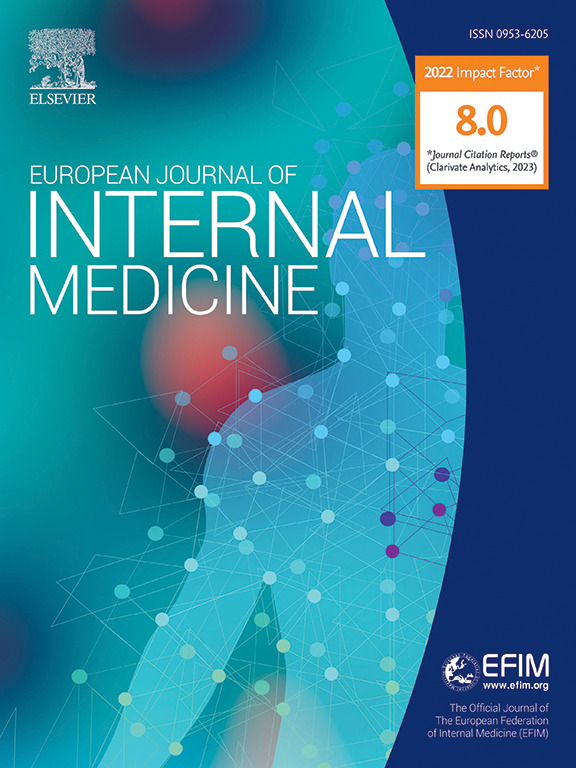经皮冠状动脉介入术后无阿司匹林策略:旧习惯、综合证据和未来展望。
IF 5.9
2区 医学
Q1 MEDICINE, GENERAL & INTERNAL
引用次数: 0
摘要
近二十年来,双重抗血小板治疗(DAPT)一直被认为是经皮冠状动脉介入治疗(PCI)患者药物治疗的基石。DAPT的组成和持续时间在过去十年中发生了很大的变化,从固定的治疗持续时间到基于个体缺血和出血风险的量身定制的策略。随着人们对PCI术后出血事件与预后相关性的认识的提高,以及根据个体出血和缺血性风险量身定制DAPT的必要性,为早期停用阿司匹林等新的DAPT调节策略铺平了道路,这些策略已被证明可以减少出血而不影响治疗效果。越来越多的证据表明,与阿司匹林相比,P2Y12抑制剂单药治疗与心肌梗死或PCI病史患者的不良缺血性事件风险较低相关,且无出血风险权衡。这些研究结果表明,PCI术后短期和长期无阿司匹林策略可能与存在强效P2Y12受体抑制的净获益相关。在这一观点中,我们提供了关于无阿司匹林策略的现有证据的当代概述,从最新的指南建议到PCI后抗血小板治疗调节的未来观点。本文章由计算机程序翻译,如有差异,请以英文原文为准。
Aspirin-free strategies after percutaneous coronary intervention: Old habits, consolidated evidence and future perspectives
For almost two decades, dual antiplatelet therapy (DAPT) has been considered the cornerstone of pharmacological treatment in patients undergoing percutaneous coronary intervention (PCI). DAPT composition and duration have considerably evolved in the last decade moving from fixed treatment durations to tailored strategies based on the individual ischemic and bleeding risks. The increasing awareness of the prognostic relevance of bleeding events after PCI and the need for tailoring DAPT according to the individual bleeding and ischemic risks paved the way to newer DAPT modulation strategies by early aspirin withdrawal which have been shown to decrease bleeding without affecting therapeutic efficacy. There is mounting evidence suggesting that P2Y12 inhibitor monotherapy is associated with lower risks of adverse ischemic events without bleeding risk trade-off in patients with a history of myocardial infarction or PCI compared with aspirin. These findings suggest that aspirin-free strategies at short and long-term after PCI might be associated with net benefit in presence of potent P2Y12 receptor inhibition. In this Viewpoint, we provide a contemporary overview of available evidence on aspirin-free strategies, moving from the latest guidelines recommendations to future perspectives on modulation of antiplatelet therapy after PCI.
求助全文
通过发布文献求助,成功后即可免费获取论文全文。
去求助
来源期刊
CiteScore
9.60
自引率
6.20%
发文量
364
审稿时长
20 days
期刊介绍:
The European Journal of Internal Medicine serves as the official journal of the European Federation of Internal Medicine and is the primary scientific reference for European academic and non-academic internists. It is dedicated to advancing science and practice in internal medicine across Europe. The journal publishes original articles, editorials, reviews, internal medicine flashcards, and other relevant information in the field. Both translational medicine and clinical studies are emphasized. EJIM aspires to be a leading platform for excellent clinical studies, with a focus on enhancing the quality of healthcare in European hospitals.

 求助内容:
求助内容: 应助结果提醒方式:
应助结果提醒方式:


